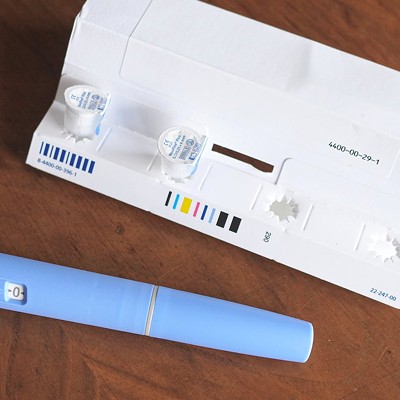It’s the drug pro-choicers call an essential public health measure.
It’s the drug pro-lifers call a chemical coat hanger.
It’s RU-486.
If you lived in France or almost any other European Union country, your doctor could prescribe it for you today. Ditto for China, India, New Zealand, Norway, Russia and South Africa, not to mention a few others.
But you live in Nova Scotia, Canada. So you’re out of luck.
You don’t have legal access to RU-486, an early-term abortion pill that was recently added to the World Health Organization’s Model List of Essential Medicines, an inventory of 312 drugs that are considered benchmarks in meeting worldwide “priority health care needs.”
Why can’t women who want a medically recognized alternative to surgical abortion take the RU-486 option during the first couple months of their pregnancy?
Well, because RU-486 isn’t approved by Health Canada for use here.
It isn’t approved because no drug company has asked Health Canada to approve the marketing of it. And if no drug company asks, Health Canada doesn’t get involved.
Which raises the question: How come no drug company is willing to ask? Which puts us into an endless, answer-less loop. Which will, eventually, bring us back to the economics of pharmaceutical drugs and the fear of the fury of the pro-life movement.
RU-486 is a little white pill—about the same size as an aspirin. It’s used to terminate pregnancies up to nine weeks’ gestation. The advantage of the drug is that a woman takes RU-486 in her doctor’s office and then she goes home to wait out the abortion, returning for a follow-up visit.
Medical abortion—that’s what it’s called when it’s termination by pill—takes longer and requires more active participation by the woman than a one-stop surgical abortion in a hospital, but it allows those who make the decision to abort in early pregnancy to keep that choice within the landscape of their doctor’s office.
This is one reason pro-life advocate Margo Burke, executive director of Nova Scotians United for Life, the educational arm of the provincial pro-life movement since 1971, opposes its introduction here. “It will make abortion more secret,” she argues. According to LifeSite.net, an affiliate of Canada’s Campaign Life Coalition, that would make it “much more difficult for pro-lifers to reach women in need of support in crisis pregnancies.”
Although avoiding protesting pro-lifers outside abortion clinics is one good reason for introducing RU-486 in Canada, those advocating for the pill say that’s far from the only reason to make it available. “What we’re looking for is a safe method of terminating an unplanned pregnancy,” says Dr. Norman Barwin, a practising gynecologist and president of Canadians for Choice, a national non-profit organization supporting reproductive freedom. “The medical route is, in over 95 percent of cases, quite effective.” In fact, it accounts for up to roughly 30 percent of all abortions in the countries where it’s available.
But, of course, it isn’t available here.
Not because there isn’t the need for an alternative. Eighteen years after the Morgentaler decision de-criminalized abortion in Canada, national pro-choice organization Canadians For Choice reports that only 17.8 percent of hospitals in Canada perform abortions. Nunavut and Prince Edward Island offer no access to terminations whatsoever. Women in Nova Scotia can end pregnancies up to 15 weeks gestation at the Queen Elizabeth II Health Sciences Centre in Halifax and at least one other hospital. They used to be able to get abortions at the Morgentaler Clinic too, but the abortion rights activist closed his McCully Street clinic in November 2003. Women who used the private clinic had to pay out-of-pocket for the service—between $400 and $750.
Medical abortion—after counting prescription, counselling and follow-up visit fees—cost about the same as surgical early-pregnancy termination—on the low end of the Morgentaler scale.
If it were available.
Which it isn’t.
The trade name RU-486 comes from the initials of Roussel-Uclaf, the French pharmaceutical company that began trials on the drug in 1982. Its suffix, “-486,” is a plain old serial number.
The drug behind the trade name is mifepristone. Mifepristone is to RU-486 as acetaminophen is to Tylenol. And, like acetaminophen, mifepristone has other brand names, including Mifeprex, which is what RU-486 is called in the United States, where the drug’s been available for nearly six years. There, three 200 mg doses—enough to terminate one pregnancy—costs about $300.
For that price, women get a powerful antiprogestin. RU-486 works by binding to receptors in the uterus and preventing the work of the pregnancy hormone progesterone. Essentially, that means it cuts off nourishment to the fetus. Or, if you like a less technical definition, from the website for pro-life organization American Life League, it “cuts off nourishment to the preborn child, who starves to death inside his mother’s womb.”
A woman taking RU-486 follows that pill with the over-the-counter medication misoprostol, which ripens the cervix and causes the uterus to contract and expel its lining and contents. It creates conditions similar to a period, but with heavier bleeding and intense cramping. The woman may also have to dispose of the expelled tissue, which pro-lifers—and some pro-choicers—say can be identifiably fetal, depending on how many weeks pregnant a woman is.
Which is, of course, one more reason why RU-486 is so controversial.
If you want to understand how RU-486 has been available for nearly two decades in Europe and has been the subject of Canadian clinical trials for six years and is still not available to Canadian women, it will help to know how drugs come to market through the bureaucratic cogs of Health Canada.
Drug approval in Canada is a long, costly three-step process.
Step one: pre-clinical trials. These take place in a lab, where the drug’s toxicity and dosage levels, among other factors, are tested on small animals and by administering the new drug to tissue cultures. If the pre-clinical trials are promising and safe, the drug company or researcher sponsoring it applies for authorization to conduct a clinical trial.
Step two: clinical trials. This is testing on “informed and consenting human subjects.” Health Canada does a complete review of data from clinical trials even if the drug has already been approved in another country, which can lead to sometimes frustrating delays. But Norman Barwin of Canadians for Choice admits that can be a good thing. “When you think about Health Canada being slow with pregnancy anti-nausea drug Thalidomide, thank god. Not too many patients had used it and we had a much lower incidence of all these unfortunate, horrible genetic abnormalities.”
But delay has its limits. RU-486 was introduced in France in 1982, “and here we are in 2006,” he says, “still waiting.”
If a drug survives the clinical trials—as RU-486 did—it normally goes on to step three: New Drug Submission. Using the pre-clinical and clinical trial data and other information, Health Canada then determines the drug’s efficacy, quality and safety—basically, whether the therapeutic benefits outweigh the risks. If the drug is accepted, it’s for sale.
The problem with RU-486 is that it’s never proceeded to step three. No one—not Roussel-Uclaf; nor Population Council, which holds the US patent rights to the drug; nor Danco Laboratories, the US manufacturer; nor Exelgyn, which until recently held all non-US patent rights to the drug—asked Health Canada to approve it for sale here.
According to a report in the Ottawa Citizen in September 2005, manufacturers “won’t apply to market the drug in Canada until they are invited to do so by Health Canada to ensure they won’t face a hostile government with such a controversial drug.”
The problem, says Norman Barwin of Canadians for Choice, is that because the drug companies are “marketing many other products and because labelled the abortion pill, it would inhibit the marketing of the other products. That’s the underlying political reason.” Not that the companies will admit that, of course. “They say, ‘We’re not in a position to provide this drug at the current time.’”
Cindy Summers says, “It is absolutely not true.”
Summers is the New York-based spokesperson for Danco, the drug’s US manufacturer. “If Danco were worried about anti-choice backlash,” she says, “we certainly wouldn’t be marketing the drug .” Where, it’s worth noting, this week legislators in South Dakota signed into law a ban on abortions that doesn’t allow for even victims of rape or incest to seek termination. (The bill’s sponsor seeks to make this new law—America’s most stringent—a benchmark in the effort to overturn Roe v. Wade, the 1973 ruling that recognizes women’s right to termination.)
Summers says her company’s lack of movement on Canadian marketing is all about economics.
Danco explored the possibility of making the drug available in Canada a few years ago, but the market was too small to justify the hoops it would have to jump through to satisfy Health Canada.
Summers says, among other issues, Danco has been unable to find a Canadian distributor (a Health Canada requirement). And the company says it’s too small to fulfill Health Canada’s condition of an in-Canada office for the manufacturer.
Finally, Health Canada’s initial and annual fees, she says, “would wipe out any profit contribution that we could expect from Canadian business.” Danco wants Health Canada to waive those fees.
Health Canada couldn’t say whether there was a precedent for conceding to change regulations in similar drug-marketing cases in the past.
Summers says Danco may look at bringing the drug to market in Canada in the future “if we can work something out with Health Canada.”
Given the private sector’s current reluctance to get involved—after all, since patent-holder Exelgyn’s patent expired, anyone could apply for a license to market mifepristone in Canada right now—why can’t Health Canada take a more proactive approach? “We can’t force anybody to submit,” says Health Canada’s Jirina Vlk. “To market a product or not, it’s up to the manufacturer.”
For their part, pro-choice and reproductive freedom advocate agencies are—to put it lightly—trying to ease the way for the drug to come in. Canadians for Choice and the Society of Obstetricians and Gynaecologists of Canada support it. But they can only go so far. The SOGC passed a resolution in 1992 supporting the legal availability of the drug. Canadians for Choice president Norman Barwin says “There is a strong voice we use at all opportunities to say let’s get this drug in and let’s show support for the pharmaceuticals to get this drug in.”
But ultimately either Health Canada has to change its regulations or a manufacturer has to pony up and take the pro-life heat for the slim chance of a little profit on RU-486.
Penny Priddy, former British Columbia health minister and current NDP MP for Surrey North, is one of RU-486’s few Canadian political advocates. Priddy, a nurse by trade, has been RU-486’s squeaky wheel in Canada, openly criticizing former Liberal health ministers Allan Rock and Ujjal Dosanjh for their lack of backbone on the subject and calling for Health Canada to intervene to get the drug into the country.
“Surely between the minister of health and Health Canada they can find a solution,” Priddy told Shelley Page of the Calgary Herald in July last year.
Though her communications director Tracy Switzer says Priddy is “very interested” in this topic, she doesn’t know if the new MP will bring it up in the House of Commons during the spring sitting. Priddy couldn’t be reached for comment.
For now, the only way to legally bring a medical abortion pill into Canada is for women travelling out-of-country to bring it with them back across the border. But Health Canada says you can only import a single course of the drug this way—enough for one abortion. This is probably a good thing, adds Norman Barwin. “There could be a serious black market trade with ,” he points out, “and we need to inform people that this is a drug that requires medical management.”
The medical management issue becomes even stickier when internet pharmacies enter the mix.
Though Health Canada’s Vlk says shipments of RU-486 should be “stopped at the border” as illegal, internet pharmacy Apo Health Inc. assured me by email it could send the drug to Canada. (Patients would have to find their own follow-up misoprostol, but it’s available at Canadian pharmacies without a prescription.)
The Apo rep sent me a link to a PayPal account where I could order the drug for shipment by FedEx or UPS in a plain bubble wrap envelope. The cost? Sixty-five dollars US, including shipping and handling, for my Halifax home abortion. It’s a steal—considering it runs American women about $300 US—that is, if the drug ever gets to its destination. (My shipment never arrived.)
The cost becomes infinitely greater, though, when you start considering the health risks.
Women who get RU-486 from internet pharmacies may miss out on pre-use counselling, meaning they might not be aware the drug isn’t supposed to be used after the nine-weeks-gestation cut-off because it can cause birth defects. Patients may also fail to follow-up with the second drug, misoprostol, which expels the fetus and lining and completes the abortion. They may not have follow-up ultrasounds.
“If there’s any part of left,” Norman Barwin says, “there is a risk of infection. Everything must be completely evacuated. In five percent of cases, all of it doesn’t pass and there can be an infection, and that can be a very serious thing.”
RU-486’s legal absence in Canada has other implications for women’s health as well. Primary among those concerns is the use of an alternate method of medical abortion doctors across the country are turning to in place of RU-486. A drug called methotrexate.
Methotrexate, which goes by the brand names Rheumatrex and Trexall, is a cancer drug. It can also be beneficial in the treatment of Crohn’s disease, rheumatoid arthritis, psoriasis and lupus. Like abortion by RU-486, medical abortion by methotrexate is a two-part process; in both cases, the follow-up drug is contraction-inducing misoprostol and the abortion is completed at home. Also like RU-486, methotrexate requires counselling and a follow-up ultrasound and pregnancy test.
Those are the similarities. Here’s a big difference:
Methotrexate is an antimetabolite, meaning it blocks the metabolic action of cells, retarding their growth. While RU-486 impedes fetal growth, methotrexate works on the cytotrophoblast, part of the placenta.
The end result? It can take a lot longer—up to 44 days—to complete the abortion.
That’s far from ideal, but more and more doctors are prescribing methotrexate in the absence of RU-486, even though, significantly, the drug has never been approved by Health Canada for medical abortion.
The nurse practitioner at Halifax’s Planned Parenthood Metro Clinic says “we have heard things here and there that methotrexate is used by certain people. I’m not sure who they are. Generally gynecologists that are performing procedures are taking women to day surgery and do a DNC or suction-like procedure. just one or two instances where people told me off-hand and they didn’t say .”
In 1999 the Society of Obstetricians and Gynaecologists of Canada published a set of clinical practice guidelines for methotrexate abortion. The six-step procedure is in a document on the society’s website. Since the drug is approved by Health Canada for use in other treatments, this isn’t illegal. It’s called “off-label use”—not exactly OK, but not technically wrong either.
A lot like the political atmosphere that surrounds abortion in Canada today.
But until RU-486 is approved, this is what Canadian medical abortion will be.
When RU-486 comes, it will change the country’s abortion terrain, allowing women to choose to have abortions at home, to avoid surgery and to end pregnancies earlier.
“I think it would be widely used,” says Dr. Norman Barwin. “In my practice, if it was available, it would be my first method of choice. And obviously that’s after making sure the patient is well informed, so we can make that decision together. The more options we can give to people the better.”
“It hasn’t come up much here,” says Campaign Life Coalition’s Herman Wills, about attention surrounding the drug. “I think the more we bring it up the more people are agitating to get it in.”













